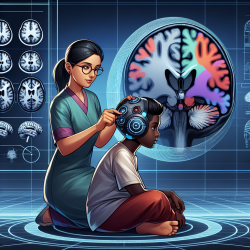Introduction
In the realm of pediatric speech-language pathology, the journey to optimal outcomes for children with bilateral cleft lips and palates is complex and multifaceted. Recent research, such as the study titled "What We Learned from Performing the Inverse Malek Procedure to Repair Bilateral Cleft Lips and Palates: A Single-Center Retrospective Study," provides invaluable insights that can empower practitioners to refine their approaches and enhance patient outcomes.
Understanding the Inverse Malek Procedure
The Inverse Malek Procedure, as detailed in the study, offers a surgical approach aimed at repairing bilateral cleft lips and palates. This retrospective study, conducted at the Children and Adolescent Surgery Department of the Centre Hospitalier Universitaire Vaudois, analyzed the long-term outcomes of 30 patients treated with this method. The findings reveal a nuanced balance between surgical timing and the risk of complications, particularly oronasal fistulae, which occurred in 70% of cases.
Key Outcomes and Implications for Practitioners
The study underscores the importance of strategic timing in surgical interventions. Early closure of the soft palate, as advocated in the Inverse Malek Procedure, is linked to improved speech outcomes. However, it also highlights the need for vigilance regarding the development of fistulae, which can impact speech and feeding.
For practitioners, these findings emphasize the need for a multidisciplinary approach to treatment. Collaboration with pediatric plastic surgeons, ENT specialists, orthodontists, and psychologists is crucial in addressing the complex needs of children with bilateral clefts. This collaborative effort ensures comprehensive care that extends beyond surgical intervention to include speech therapy and psychological support.
Encouraging Further Research and Application
The insights from this study serve as a call to action for practitioners to engage in further research and apply data-driven strategies in their practice. By leveraging the findings of the Inverse Malek Procedure, speech-language pathologists can refine their therapeutic approaches, focusing on early intervention and multidisciplinary collaboration to enhance speech intelligibility and overall quality of life for children with clefts.
Moreover, this research highlights the importance of ongoing evaluation and adaptation of surgical techniques to minimize complications and optimize outcomes. Practitioners are encouraged to stay informed about advancements in surgical methods and incorporate evidence-based practices into their treatment plans.
Conclusion
The journey to improving outcomes for children with bilateral cleft lips and palates is one of continuous learning and adaptation. By embracing the insights from the Inverse Malek Procedure and fostering a collaborative, multidisciplinary approach, practitioners can make a profound impact on the lives of their young patients. For those interested in delving deeper into the study, the original research paper can be accessed here.










